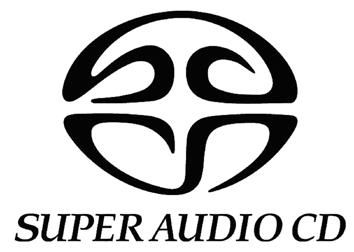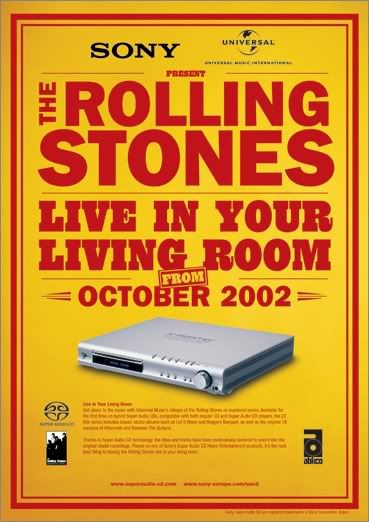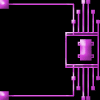
Ten years ago it was the future of home music reproduction. Today it's … well, that gets complicated.
First a quick chalk talk for non-audiophiles who have wandered in. Super Audio CD (SACD) is a recording, storage, and playback medium based on a much higher sampling frequency than the standard ("red book" in audiophile lingo) CD. For a quick rundown of the principles and specs of the SACD format, the Wikipedia entry is here.
Why does SACD matter? Two reasons:
1. Assuming the recording doesn't have major flaws, the SACD sound reproduction is more lifelike and natural.
2. SACD offers the capability to add extra channels. SACDs aren't necessarily multi-channel; older recordings transferred to SACD can be stereo or even monaural. But modern SACD recordings typically have five channels: the standard left and right, plus a center, plus two surround, also called satellite. You can add a subwoofer if you like very deep bass to massage your internal organs. Ideally, the music fills out your listening space similarly to what you hear in a live music venue, with a wider soundstage in front and the extra ambience of reverberation.
Full disclosure: I'm hooked on SACD.
The thing is, SACD never caught on in a big way. It wasn't for lack of promotion: Sony and Philips got behind it with lots of expensive advertising. Audio dealers weren't shy about touting its virtues. Early adopters mostly swooned over it.
But there were problems right from the kick-off. The first generation of SACD players was expensive, in the $500-plus range, when prices for standard CD players had already hit bedrock. And to get the full benefit, you had to buy more speakers. Then there was the software problem.
Aside from the Golden Ear audiophile contingent, most people weren't willing to shell out a lot of money for a player until there were plenty of SACDs available. But with the higher cost of pressing SACDs, most labels were not pawing at the starting gate to release titles in the unproven medium. Those that tried to bring out a reasonable selection — again, notably Sony and Philips — released SACD remasterings of their most popular titles, including some that were decades old, like the inevitable Miles Davis Kind of Blue.
Launching SACD with the heavy-hitter albums seemed to make marketing sense. On the other hand, the labels were asking people to buy albums that many already had (in red book editions). To many music "consumers" (I'm afraid the term is all too appropriate), it was foolish to spend $20 for an SACD version of a CD that already sounded cracking good to them.
The timing was bad, too. Younger people didn't have the "high fidelity" bug their elders had. They'd grown up with boomboxes and the Walkman and would soon discover MP3. The sound quality was abysmal on those portables, but their users didn't know it or didn't care. And who can define what a "realistic" rock album is? The music is all electronically processed. An electric guitar or keyboard can sound like practically anything. Fidelity to an original source, a prized commodity in acoustic music like jazz and classical, is nearly irrelevant to plenty of rock and hip-hop listeners.
Hell, the new rage among Gen-Yers is black discs. Yes, 12-inch LPs, with all their warps, scratchy surfaces, and limited frequency range. They're like, edgy.
From a mass marketing standpoint, SACD has been a failure. Another case of quadrophonics. The rise and fall of a new Betamax. Both the trade press and the mass media have pronounced obsequies over the medium.
Hyperion, the superb English classical label, has thrown in the sponge. They will no longer make new SACD recordings. The writing on the wall?
What's ironic is that everyone who has a home theater set-up — a phenomenon that has gone mass-market since SACD was introduced — has the speaker configuration to play back SACD. All you need is an SACD player that also reads DVDs, which most of them do. Maybe SACD was launched a few years too soon. Or maybe our computer-centric culture with its download mentality just doesn't care about realistic musical sound.
However, I come to praise SACD, not to bury it. And I'm not alone. Despite its lack of star billing, the format is far from dead. Labels with a commitment to audio quality — notably Chandos, BIS, PentaTone, and Channel Classics — still issue some of their titles in SACD.
And while the format's greatest strength is in classical and jazz, plenty of rock albums that were excellently recorded in stereo, such as Steely Dan's Gaucho, are out in SACD now. Pink Floyd's Dark Side of the Moon is said to be a real knockout. I have the SACD version of Bob Dylan's Blonde on Blonde, which is streets ahead of its earlier incarnations.
An excellent site, SA-CD.net, is the best place to get acquainted with what's available. It lists 5,522 SACDs that can be ordered. I trust that an innovation that is so technically superior still has a future.
First a quick chalk talk for non-audiophiles who have wandered in. Super Audio CD (SACD) is a recording, storage, and playback medium based on a much higher sampling frequency than the standard ("red book" in audiophile lingo) CD. For a quick rundown of the principles and specs of the SACD format, the Wikipedia entry is here.
Why does SACD matter? Two reasons:
1. Assuming the recording doesn't have major flaws, the SACD sound reproduction is more lifelike and natural.
2. SACD offers the capability to add extra channels. SACDs aren't necessarily multi-channel; older recordings transferred to SACD can be stereo or even monaural. But modern SACD recordings typically have five channels: the standard left and right, plus a center, plus two surround, also called satellite. You can add a subwoofer if you like very deep bass to massage your internal organs. Ideally, the music fills out your listening space similarly to what you hear in a live music venue, with a wider soundstage in front and the extra ambience of reverberation.
Full disclosure: I'm hooked on SACD.
The thing is, SACD never caught on in a big way. It wasn't for lack of promotion: Sony and Philips got behind it with lots of expensive advertising. Audio dealers weren't shy about touting its virtues. Early adopters mostly swooned over it.
But there were problems right from the kick-off. The first generation of SACD players was expensive, in the $500-plus range, when prices for standard CD players had already hit bedrock. And to get the full benefit, you had to buy more speakers. Then there was the software problem.
Aside from the Golden Ear audiophile contingent, most people weren't willing to shell out a lot of money for a player until there were plenty of SACDs available. But with the higher cost of pressing SACDs, most labels were not pawing at the starting gate to release titles in the unproven medium. Those that tried to bring out a reasonable selection — again, notably Sony and Philips — released SACD remasterings of their most popular titles, including some that were decades old, like the inevitable Miles Davis Kind of Blue.
Launching SACD with the heavy-hitter albums seemed to make marketing sense. On the other hand, the labels were asking people to buy albums that many already had (in red book editions). To many music "consumers" (I'm afraid the term is all too appropriate), it was foolish to spend $20 for an SACD version of a CD that already sounded cracking good to them.
The timing was bad, too. Younger people didn't have the "high fidelity" bug their elders had. They'd grown up with boomboxes and the Walkman and would soon discover MP3. The sound quality was abysmal on those portables, but their users didn't know it or didn't care. And who can define what a "realistic" rock album is? The music is all electronically processed. An electric guitar or keyboard can sound like practically anything. Fidelity to an original source, a prized commodity in acoustic music like jazz and classical, is nearly irrelevant to plenty of rock and hip-hop listeners.
Hell, the new rage among Gen-Yers is black discs. Yes, 12-inch LPs, with all their warps, scratchy surfaces, and limited frequency range. They're like, edgy.
From a mass marketing standpoint, SACD has been a failure. Another case of quadrophonics. The rise and fall of a new Betamax. Both the trade press and the mass media have pronounced obsequies over the medium.
Hyperion, the superb English classical label, has thrown in the sponge. They will no longer make new SACD recordings. The writing on the wall?
What's ironic is that everyone who has a home theater set-up — a phenomenon that has gone mass-market since SACD was introduced — has the speaker configuration to play back SACD. All you need is an SACD player that also reads DVDs, which most of them do. Maybe SACD was launched a few years too soon. Or maybe our computer-centric culture with its download mentality just doesn't care about realistic musical sound.
However, I come to praise SACD, not to bury it. And I'm not alone. Despite its lack of star billing, the format is far from dead. Labels with a commitment to audio quality — notably Chandos, BIS, PentaTone, and Channel Classics — still issue some of their titles in SACD.
And while the format's greatest strength is in classical and jazz, plenty of rock albums that were excellently recorded in stereo, such as Steely Dan's Gaucho, are out in SACD now. Pink Floyd's Dark Side of the Moon is said to be a real knockout. I have the SACD version of Bob Dylan's Blonde on Blonde, which is streets ahead of its earlier incarnations.
An excellent site, SA-CD.net, is the best place to get acquainted with what's available. It lists 5,522 SACDs that can be ordered. I trust that an innovation that is so technically superior still has a future.






1 comment:
I was partial to DVD-Audio myself.
Ugh, I hate that I just instinctively used the word "was." Because I still am a fan of DVD-A -- indeed, my player remains the central pride of my home theater setup.
But my problem, like yours, is on the software side. Not enough titles, and not much momentum for the format.
I do wonder where all this stuff would be by now if this decade had not financially battered the record industry. Just another reason to despise the rise of file-sharing, its legions of thieves, and all that they wrought.
Post a Comment